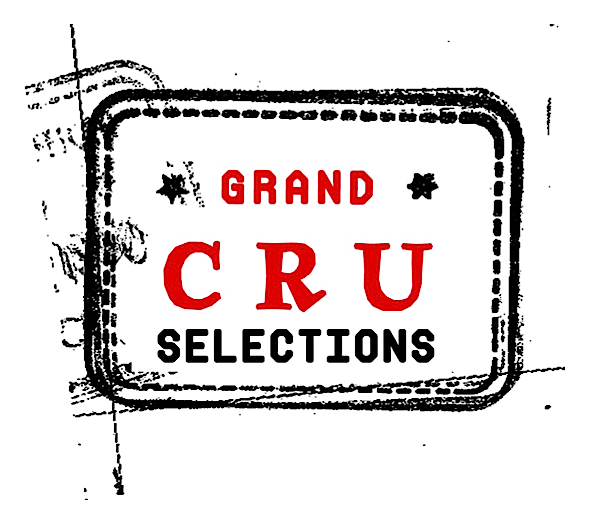Domaine des Croix
Beaune, Côte de Beaune, France
David Croix
We met a young David Croix early on in his career, thanks to an introduction from Becky Wasserman. David had quickly made a name for himself as the winemaker for the venerable negociant, Camille Giroud, a position he held from 2002 to 2016 and due to the range of terroirs vinified at Camille Giroud, he received a one-of-a-kind education on Beaune vineyards.
“David Croix’s dream is to make people understand the great value of Beaune, which, despite being Burgundy’s center of winemaking, has generally fallen short in terms of the appeal of its own wines. He’s making an excellent case with parcels like the premier crus Pertuisots and Savigny’s Les Peuillets.”
— JON BONNÉ, PUNCHDRINK.COM
In 2005, David and a group of private investors bought Domaine Duchet and started Domaine des Croix. Domaine Duchet’s holdings were focused around Beaune along with an interesting parcel of Corton-Charlemagne and Corton, so David’s experience at Camille Giroud came in really hand. His mission since has been to dedicate himself to showing off the character of these Beaune terroirs, which for too long have been under appreciated.
-
David Croix is originally from Montlouis sur Loire, he studied at the University of Dijon. Prior to landing his position as winemaker at Camille Giroud at age 24, David worked with Benjamin Leroux, whom is originally from Beaune, and introduced him to the region’s community.
-
Beaune is the third largest appellation in the Côte d’Or (after Gevrey, and Meursault) and yet there are less then 10 vignerons in Beaune. No Grand Cru, 42 premier crus, and very tiny bits of village level vineyards.
There is great diversity here - elongated and flanked to three hill sides with profound influences of colluvial outcrops from three hills and alluvial downslope creeps, from both the Rhoin river and L’Avant Dheune one can divide the appellation into two: North and South.
Towards the North where the appellation borders Savigny-lès-Beaune, one experiences a plush side to the wines, more easy drinking thanks to this alluvial fan as the Rhoin river insinuates a natural border. For example, David’s “Les Cents Vignes, “where vines are almost 60 years old. This is one of the earliest picking sites.
-
Farming has been organic, not certified, since 2008 on all of the vineyards.
-
Generally 100% de-stemmed, and transferred to traditional wooden, uncovered vats. Alcoholic fermentation takes place with indigenous yeasts and the total maceration time generally lasts between 15 and 20 days. Pressing is pneumatic, and the pressed and free-run juices are partly separated. Full malolactic fermentation in the cool cellars.
As of recent vintages, Dacid has begun to use natural sulphur mined in Poland to preserve his wines. Amongst the growers to use this technique are tight clan of progressive Burgundians such as d’Angerville, Lafarge, Lamy, and Vassin. They all chipped in towards equipment to develop it in liquid form. This technique is slowly percolating through the wine world and originates in Italy. David finds that when the wines are put into contact with this sulphur, they recover quickly, and prevents a foreign metallic quality.
Wines
BOURGOGNE ROUGE
(0.14ha) David's Bourgogne Rouge is made from a declassified Savigny-les-Beaune Villages parcel planted on well-draining gravel and sandy soils.
BEAUNE ROUGE
(1.16ha) A blend of four parcels with a variety of different soils: deep red clay, clay and sand, alluvial.
BEAUNE 1ER CRU PERTUISOTS
(0.53ha) A blend of two parcels planted midslope; one of the most unique sites in Beaune and one that has been rarely designated. The vines are planted in pure limestone after a thin layer of clay.
BEAUNE 1ER CRU LES CENTS VIGNES
(1.10ha) A blend of four parcels planted in the mid-1950s and 1960s from both an upper slope parcel planted in brown gravel clay soil (grèze litée) and a lower slope parcel planted in well-drained alluvial soils.
BEAUNE 1ER CRU LES GREVES
(0.30ha) Coming from a single parcel planted in 1968 on brown clay soils with gravel (grèze litée).
BEAUNE 1ER CRU LES BRESSANDES
(0.89ha) Parcel planted in 1983, 1987, and 1991 on brown clay soils with gravel (grèze litée). Its more easterly exposition gives the wines elegancy and approachability.
BEAUNE 1ER CRU LES TUVILAINS
(0.36ha)Parcel planted in 1990 in brown clay soil on marl, it has density and darkness. David counteracts this with very gentle extraction.
SAVIGNY LES BEAUNE 1ER CRU ROUGE LES PEUILLETS
(0.57ha) Coming from a single parcel planted in 1971 on an alluvial fan of clay-limestone soils. 20% whole cluster, indigenous yeast alcoholic fermentation in uncovered wooden vats, 5-20 days' total cuvaison. Pneumatic pressing, separation of pressed and free-run juices. 16 months' aging mostly in older barrels, a few months blending in tank.
ALOXE CORTON ROUGE LES BOUTIERES
(0.58ha) One parcel planted in 1955 on brown, silty, clay soil.
CORTON LA VIGNE AU SAINT
(0.29ha)One parcel planted in 1960 on brown clay soil over Jurassic limestone (known as Corton limestone). The starting point for Domaine des Croix’s selection massale.
CORTON LES GREVES
(0.55ha) One parcel planted in 1960 on brown clay soil, flint stones (chailles) and Jurassic limestone (known as Corton limestone).
CORTON CHARLEMAGNE
(0.25ha) A blend of two parcels in En Charlemagne both southwest-facing and planted on silty limestone marls. 100% de-stemmed. Indigenous yeast alcoholic fermentation in uncovered wooden vats. 15-20 days total maceration time. Pneumatic press, separation of pressed and free-run juices. 1 year aging: in older oak barrels, then a few months blended in tank. No fining or filtration.
SAINT ROMAIN BLANC "COMBE BAZIN"
(1ha)Early 2020 David took over farming of this parcel on shallow soils, 350m altitude and 2020 is the first vintage.

